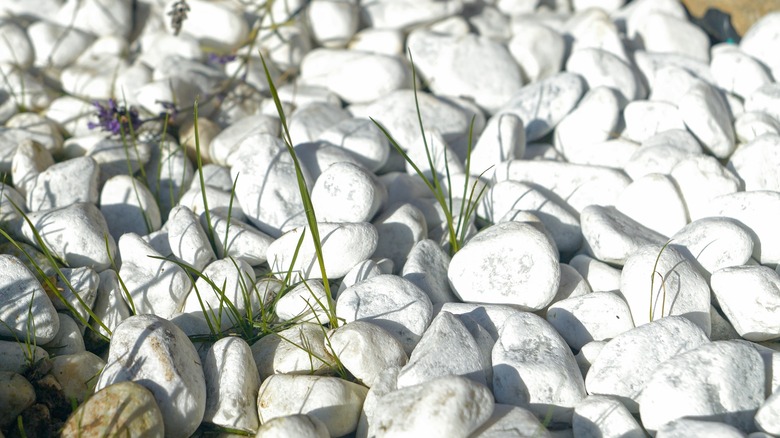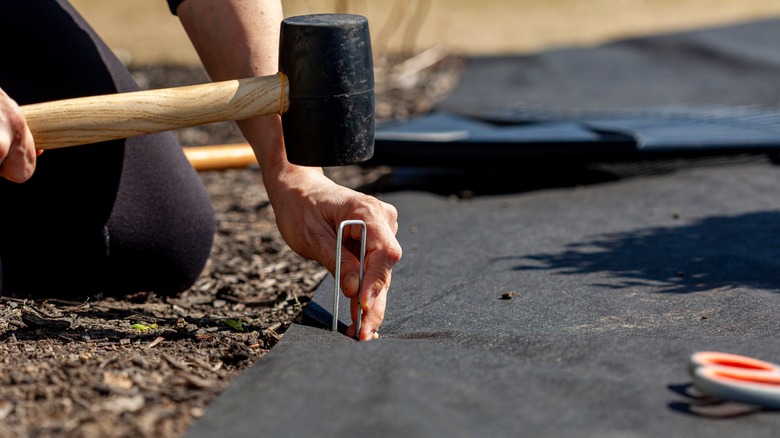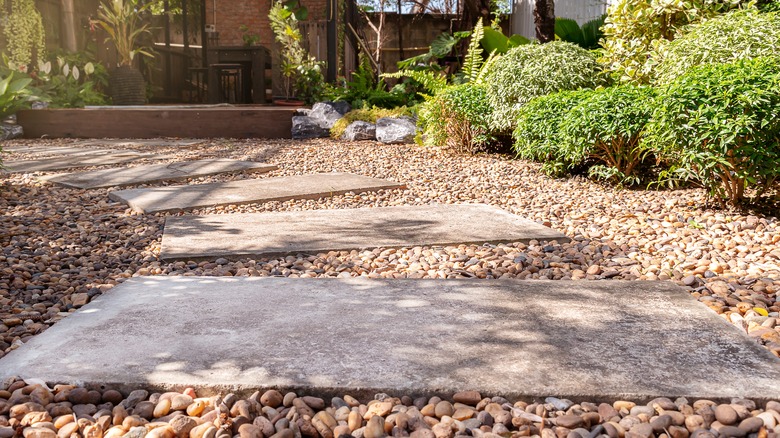Tricks To Prevent Weeds From Growing In Your Gravel
Perhaps you've considered bombing pesky weeds in your gravel with chemicals. How else would you handle things that are so determined to make your white gravel pathway look so unkempt? Over time, weeds on your gravel can make your property look like some abandoned house museum. Worse, your three-bedroom mansion will look like it's ready for paranormal tours. Granted, you can chin up and vow to uproot any weed that tries to squeeze itself between the blocks.
However, you'll soon find out that the whole exercise is time-wasting, more like chasing rabbits down their holes, and you get sick of it — because you uproot one, and twenty others soon rise. What's more? You don't want to use chemicals, which can leak into your backyard pond and destroy the plants you want to keep there, but here's the thing: Don't start embracing your gravel weeds. Don't let them conquer your indomitable spirit. The trick is to prevent them from springing up — not fighting them after they've grown all over. Here's one of the best hacks: landscaping fabric.
How landscaping fabric can help prevent weeds from growing in your gravel
Spoiler alert: Landscaping fabrics are not 100% perfect. Unfortunately, nothing is. Seeds are seeds, and weeds are weeds. The wind that helps cool your air sometimes also brings seeds from other spots. Make no mistake: even without soil, seeds will find something to cling to. Some particle. Some substrate. Seeds look at the glass as half-full, not half-empty. That said, a landscaping fabric does an excellent job of stifling the growth of seeds. Although one or two will surmount the odds, most seeds will not find a foothold in the soil. These few miscreants will be easier to handle. You won't even need to use chemical pesticides — just uproot them.
Nonetheless, landscaping fabrics come with certain downsides. For example, it is often rightly mentioned that landscaping fabrics destroy soil health by creating an artificial barrier between the soil and its ecosystem. But since this is your gravel, not your garden, this should not be an issue. A bigger problem is that landscaping fabrics are not permanent solutions. With time, dust and soil will accumulate on its surface, allowing seeds to grow and even thrive. Scientists believe there are no permanent solutions for weeds. It turns out that the price of a spotless gravel, like liberty, is eternal vigilance.
What to consider when using landscaping fabric, plus more gravel-weed hacks
Landscaping fabrics, also called geotextiles, come in different types and classes, including woven, non-woven, knitted, and stitched. Woven fabrics are made by systematically interlocking strands of fibers. This process creates a sturdy matrix with generally higher tensile strength. Plus, woven landscaping fabrics don't easily stretch, hence, can better withstand feet and vehicular traffic. Lastly, woven landscaping fabrics are often less permeable; they don't easily let air or water flow through them. All these qualities make them perfect for keeping weeds away from your gravel.
There are other gravel weed prevention options you can try. For example, you can add more gravel or sand (to make it harder for weeds to get a foothold), wash your vehicle as often as you can, especially because vehicles are known to carry seeds, or consistently mow your lawn so the grass and other weeds — do not seed. If prevention does not work, you can try a treatment alternative. For example, you might use a weed blaster or the other chemicals out there. Yet, to avoid the harmful environmental effects of herbicides, consider using a portable propane torch, especially because propane is cleaner than many other alternatives, including those that use diesel. Bonus point? A propane torch will also help clean the debris. Another simple trick to kill the weeds in your gravel is to use salt — like the Romans did to Carthage during the Punic Wars. Sorry, historians have found no evidence for this popular legend.


